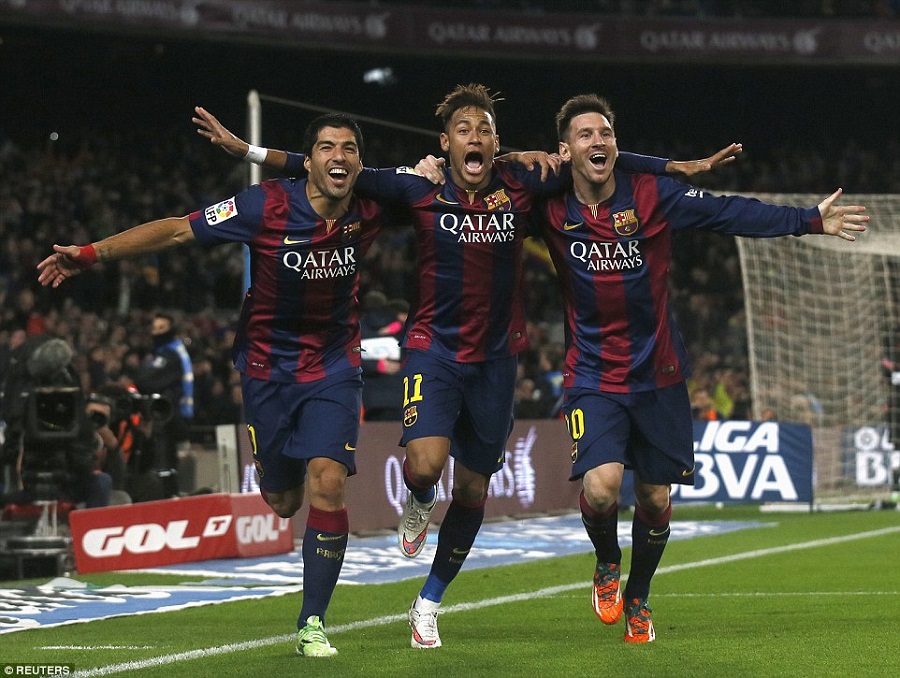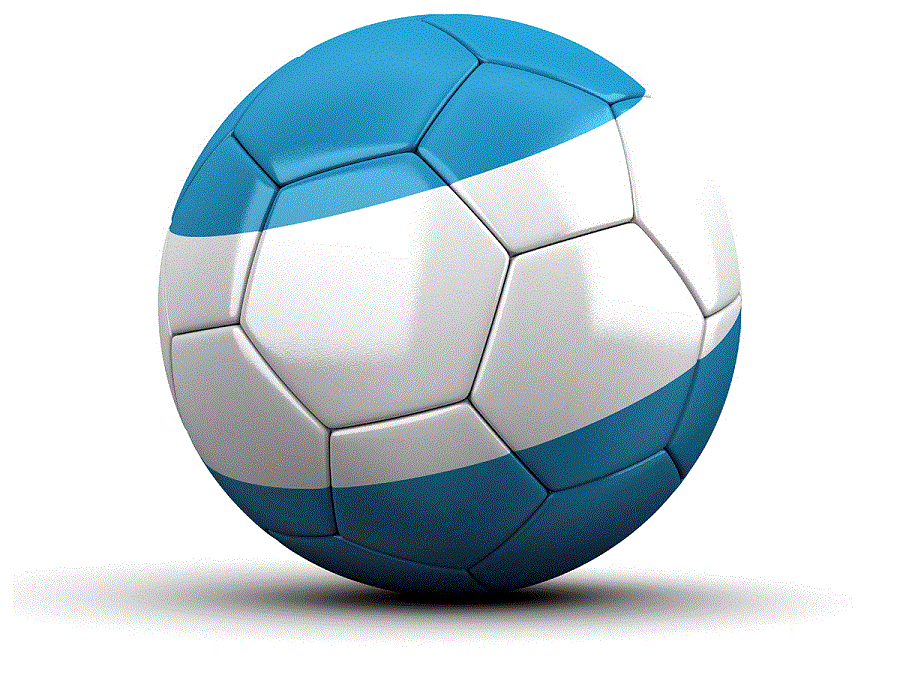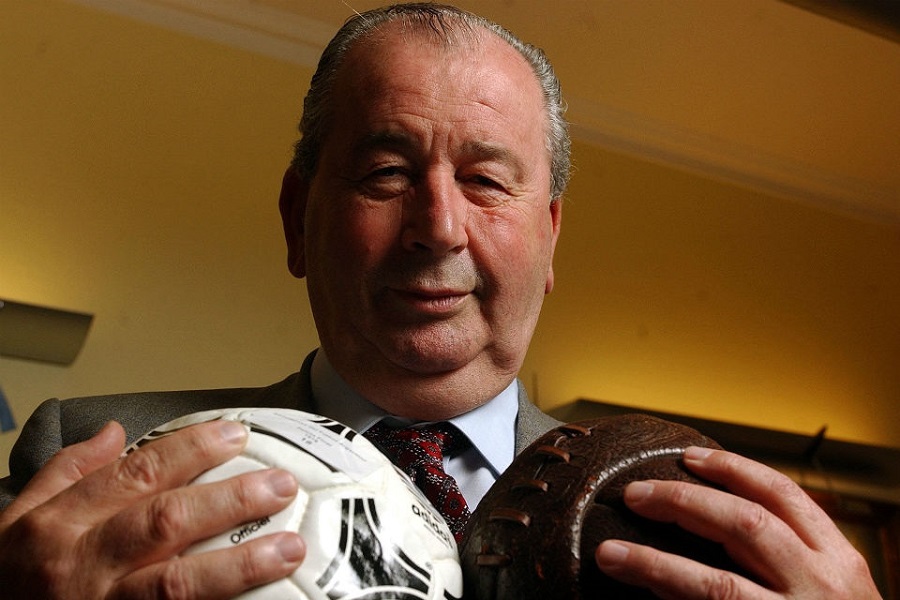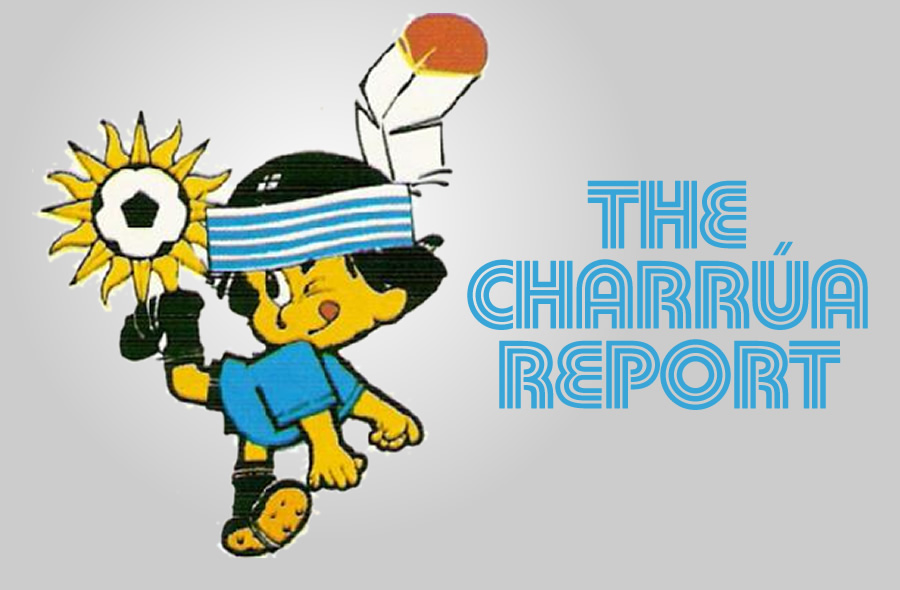Hello fans! It’s El Bolso once again with all the latest on Uruguayan soccer. This week I have some on-field happenings, and my opinion on a pretty significant off-field development in a top international league. Let’s get to it!
Uruguayos, Uruguayos

Edinson Cavani was off this week, as was suspended by PSG for returning late from his holiday break (Argentinian forward Ezequiel Lavezzi suffered the same fate). How hard can it be to get a seat on the early flight when you’re Edinson Cavani? Let’s not start this BS already. Uruguay needs Cavani focused and in shape for the Copa America, man. You think Luis ever shows up late to practice whenever FIFA isn’t barring him from the field? Shape up, Edi!
On a sweeter note, Martín Cáceres made his long-awaited return from injury. Cáceres scored the go-ahead goal in the 68th minute as Juventus beat Napoli 3-1 (fellow Uruguayan Miguel Britos had tied the game for Napoli just 5 minutes earlier).
But the focus this week was on Spain, where there was plenty of Uruguayan action between the Copa del Rey quarterfinals during the week and the La Liga games over the weekend. Atlético was in the middle of it all, facing Real at home for the Copa and Barcelona away in a league clash. On Wednesday, the Colchoneros took a big step towards the Copa semifinals by beating Real 2-0. José Giménez and Diego Godín were, once again, spectacular in defense, and Chema even added his second career Atlético goal to seal the win. Let’s hope Godín doesn’t try to take him out again out of jealousy.
Meanwhile, on Thursday, Barcelona showed all of its offensive potential against Elche, beating them 5-0 and all but sealing a matchup against the winner of the Madrid derby. It all started with a cool finish from Neymar off a nifty feed from Luis Suárez, then the Uruguayan striker decided to have some fun with the Elche defense. Lio Messi added the third goal from the penalty spot, and the rout was on. So it looks like one of the semifinal matchups will be Barcelona against Atlético, and if that happens we got a nice preview on Sunday at the Nou Camp. The three UMNT starters were all hugs in the tunnel before taking the field, but then it turned nasty as Giménez and Godín did everything they could to keep their friend and teammate in check. Did it work? Not really: once again, it was Neymar off of a Suárez touch, then Suárez (on a fantastic run by Messi, btw), and Messi as the Blaugrana prevailed 3-1. Even in defeat, however, Chema Giménez managed to put his stamp on the game.
What in the Holy Hell?

For today’s special topic, I thought I’d travel across the Río de la Plata to take a look at the goings on at AFA, the Argentinian Football Association, because the shenanigans are flying fast and furious over there!
First, a little bit of history. You don’t have to know all of the different permutations that the Argentinian league has undergone through the years (that would take a whole series of these posts). You should know that there’s always been friction between the Buenos Aires teams and those from the “Interior,” and that integration has proven difficult to achieve. Initially the national league involved teams from the capital and nearby cities, then in the 1967 they switched to a double tournament format: the Metropolitano (only BA and nearby teams, played as a home and away round robin), and the Nacional, which divided teams into groups and involved squads from the other provinces in addition to the traditional powers. But people mostly cared about the Metropolitan league, so in 1985 the system changed again. The calendar was flipped to coincide with the European season (August through June instead of February through December), and the Metropolitano was abolished in favor of a single double round robin league. this changed again in 1991, when the single tournament was divided into Single round Apertura and Clausura championships, which is the system that remains in place today. Shorter tournaments mean more teams stay in contention for longer periods, which is seen as a solution to the problem of dwindling attendance. Unlike Uruguay, however, there is no end of season championship series between the two tournament winners, so in essence the Argentinian league (much like the Mexican one) crowns two champions per year.
I’m not going to bore you with details about the lower levels, other than to say that below the 20 team, geographically integrated First Division, there is a single 20 team Second Division (“Primera B Nacional”) and below that the system splits into capital and interior for the remaining levels: for examples, the third level leagues are Primera B (capital) and Torneo Argentino A (interior). Both those leagues promote teams to the B Nacional independently of one another. There is a single promotion system between the First and Second levels, which at one point called for two automatic promotions and relegations, and two additional spots to be contested by teams from the two division (so the third-worst team in Primera A plays off against the third-best team in Primera B for a spot in the top league). It was recently changed to an automatic exchange of three teams like the one they have in the top European leagues.
Relegation used to be handled European style, with the worst teams in any given season being sent down (or into the relegation playoff), but that was changed at some point in favor of a three year aggregate ranking (also used in Mexico): teams get a ratio score by dividing their total points over the previous three seasons by the number of games they played in that time, and the bottom teams get sent down. This was done to avoid situations in which a hugely popular team like River Plate or Boca Juniors has a disastrous season and ends up being relegated; with a three year window to fix mistakes, the richer teams get a leg up in avoiding relegation, or so the theory goes. That theory was thrown out the window in 2011, when River Plate, arguably the biggest team in the country, ended a long stretch of economic and on-field mismanagement by losing a relegation playoff to Belgrano, a humble team from the Cordoba province. Other than giving us a budding (and very NSFW) internet star, that game created a backlash against the relegation system that only got worse in 2011, when Independiente de Avellaneda, winner of a record 7 Libertadores trophies, was relegated for the first time in its history. The result was the adoption of a new Primera A format championed by longtime AFA President and FIFA heavyweight Julio Grondona.
Shenanigans

So much can be said about Grondona: from his dictator-like grip on power in Argentina to his shady dealings in the FIFA power structure to the occasional anti-semitic oopsie, the man lived a full life. He was also the consummate political beast, and the new tournament format was one of his most ambitious steps towards consolidating power. Knowing that a small fraternity of powerful clubs is hard to control (and break into), he concocted a plan that will see the First Division swell to 30 teams (a 50% increase) in time for the 2015 season. The tournament will change back to the February-December calendar (just because) and will be organized as a 30 game season where teams play one another only once (alternating host duties from year to year). But EB, you will say, that’s only 29 games! Not exactly, because every team will have a “natural” rival (just like in MLB interleague play!) that they will face twice. In order to make this happen, relegation was suspended for the 2014 season, and half of the Primera B Nacional’s 20 teams were handed promotion slips.
How does this help Grondona? Well, like I said, having extra teams in the first division means extra votes in the division council, controlled by teams that are happy just to be at the table. Those teams, unlike River, Boca, and their ilk, need the league’s help to remain economically viable, so they’re more likely to toe the company line. The’re also more opportunity for teams from the interior to make it to the top league, and you better believe those teams will be thankful for the opportunity. But basically, this is about money. If you’re a President of a fledgling First Division team, you want to stay as long as possible and get as big a piece of the money pie as you can, and the best way to do that is to be on good terms with the people signing the TV deals, selecting referees for the games, etc. It’s not lost on anyone in Argentina that Arsenal, a perennial lower division never-has-been, ended up competing for local titles and participating in continental tournaments once Grondona’s son became involved in the club’s management. It pays to have connections, and with this new format there’s a lot more teams fighting for them. Meanwhile, the big teams get thrown a bone, because now there are a lot more bottom feeders to stand between them and Primera B.
And yet, that’s only half the story, because on July 30th of last year, Julio Grondona passed away at the age of 82, before the new format had been officially voted into place. The anti-Grondona wing of AFA immediately went to work to try to cancel the new plan, but that was impossible to do, as there were ongoing tournaments that were predicated on the new promotion and relegation rules. You try telling 10 angry Primera B team presidents that they’re not actually playing for a promotion spot like they thought and see how easy that is. So a compromise was reached: the plan moves forward, and there will indeed be 30 teams in the 2015 First Division tournament, which will start in February. However, in 2016, there will be a transitional tournament from February to June, after which the season calendar will revert to the European standard. The promotion and relegation system will be changed so that 4 teams move down and only 2 teams move up until the First Division is left with 22 teams (the 2019-20 season), at which point the balance will be maintained. So AFA will go through 5 season of turmoil and instability in order to add 2 teams to the first Division. Think about that the next time you complain about the NFL wanting to add two weeks to the regular season, or a couple extra playoff teams.
And that’s all for today, friends! The South American U20 Championship kicks off on Wednesday, so I’ll have plenty to say about that and the preseason “friendly” tournaments that are also going on in Uruguayan soil. See you then!
- The Charrúa Report: On the Right Foot - March 14, 2017
- The Charrúa Report: Campeones! - February 14, 2017
- The Charrúa Report: 48 Is Enough - January 11, 2017
- The Charrúa Report: Nico and the Sounders - December 14, 2016
- The Charrúa Report: King of the Single Rounders - December 12, 2016
- The Charrúa Report: Senseless - December 6, 2016
- The Charrúa Report: The Bum’s Rush - November 28, 2016
- The Charrúa Report: A Bump in the Road - November 16, 2016
- The Charrúa Report: Is It Priceline Time? - November 12, 2016
- The Charrúa Report: Closer to Fine - October 13, 2016


